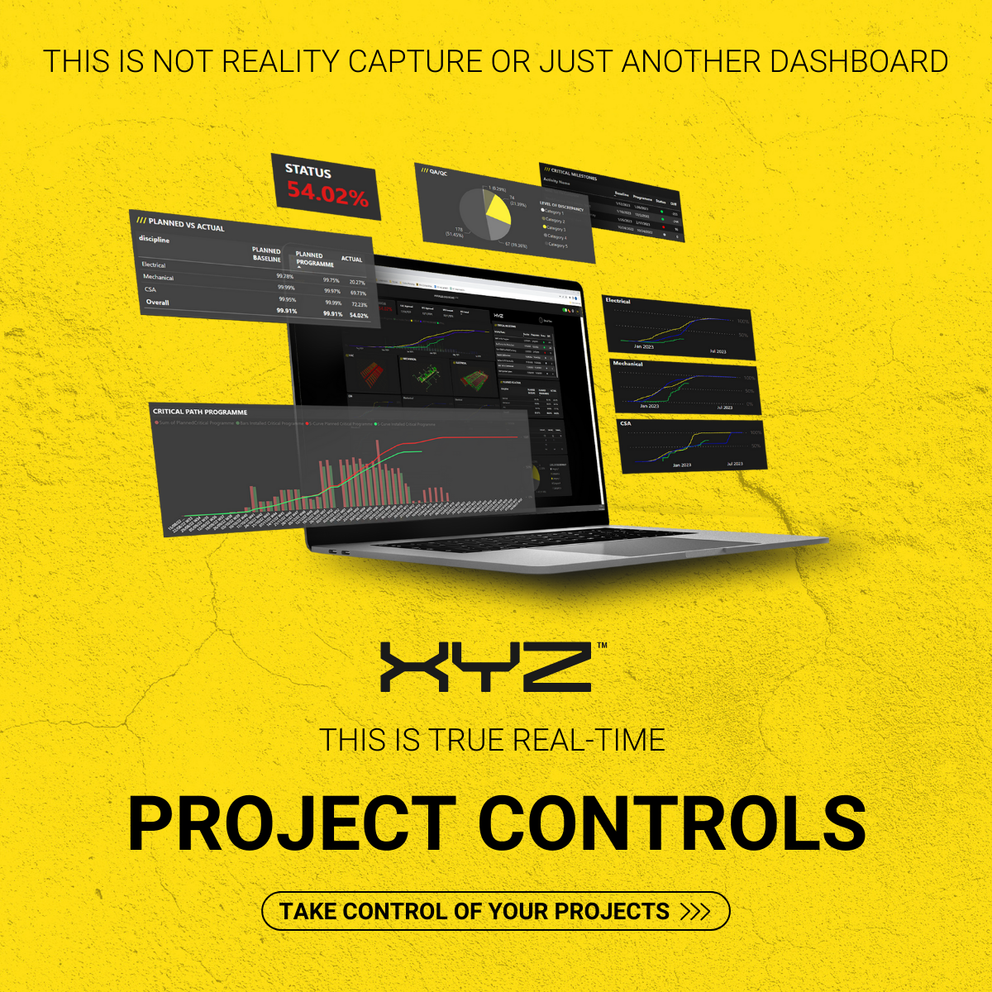-
Services
Services
Find out how we work with our clients and deliver value to construction projects from day one
-
Solutions
Solutions
Discover how all our solutions sync together to deliver construction's most powerful BIM platform to date
-
Built for
Built for
-
Industry
Industry
Understand how we support construction's biggest sectors, and hear from our clients who have experienced the power of XYZ
-
Resources
Resources
Get stuck into all our latest thought leadership, news, reports and industry leading content
-
Company
Company
Dive into what makes XYZ tick, unearth why construction is in our DNA and why we are world leaders in AR solutions

Insights
7 things I learned from NVIDIA’s Keynote Presentation at COMPUTEX
10 June 2024
Artificial Intelligence (AI) is constantly changing.
Spearheading that change is NVIDIA and their innovative CEO and Founder, Jensen Huang. He recently gave a Keynote presentation at COMPUTEX in Taiwan to share his vision on the possible future that awaits us. You can watch it all for yourself here, but since you don’t have two hours to spare, here are my 7 key takeaways from the presentation.
1. Accelerate everything, it's finally sustainable...
Power is always a limiting factor. But the combination of CPUs and GPUs have brought energy efficiency to the point where scaling is not just an option, it is a necessity.
The difference this makes means that increasing the speed by 100x only takes 3x the power, making acceleration accessible to everyone, not just those who need it most. This growth is so dramatic, Huang predicts that ‘every application and every data center will be accelerated in the near future’.
2. ... in fact, it actually saves you power now!
The parallel processing capabilities of GPUs have enabled data centers to train AI models that are orders of magnitude more powerful than those available a decade ago. Additionally, GPUs have contributed to significant savings in both time and power consumption.
The comparative increases in speed and power usage gives users a 30x performance boost per watt, equating to around a 97% savings rate in terms of power. These savings are a key factor in the growth of NVIDIA itself, because every time they scale, their operating cost goes down. Innovation like this will prove invaluable for an industry that is already struggling to secure sufficient power (as shown here).
3. The dawn of a 'New Industrial Revolution'
AI is no longer about perception and detection. Generative AI has taken over. The impact that this will have on the world will be, according to Huang, a ‘new Industrial Revolution’. Just as Nikola Tesla invented the AC generator to generate electrons, AI generators will generate ‘tokens’, the basic output of generative AI.
Data centers are the factories producing this new commodity that holds extraordinary value for every industry. Their worth is evidenced by the rate at which new generative AI models are being developed – ‘literally daily’. For the first time, the $3 trillion IT industry is about to create something that can directly serve a new $100 trillion market.
4. NVIDIA continues to lead the charge
As expected, NVIDIA’s new technology took center stage. The tech giants have been expanding at the same rate as the industry (as we covered in our February Data Center Rundown), and they are continuing to break barriers with each new product.
To kick us off, the NVIDIA Inference Microservices (or NIMs) are akin to ‘AI in a box’ aimed at simplifying the incredible complexity of operating a data center. NIMs are multifunctional microservices, tailor-made for data centers to accelerate the deployment and management of AI models.
DGX Blackwell was the next big announcement. The NVIDIA Blackwell is an individual GPU that connects two of the largest chips currently manufactured through a 10TB/s link, all hooked up to a Grace CPU, which in itself is one of the most advanced chips on the market. Combine 72 of these in one large pod and you have yourself DGX Blackwell, a behemoth that outperforms the previous model (not to mention Moore’s Law) by orders of magnitude across the board.
Not to rest on their laurels, Huang continued by announcing the generation following Blackwell; the Rubin. Details were sparse, but it is clear that this will be another substantial upgrade, and every component is already in full development.
Finally, data centers that run on ethernet connections are being invited to the generative AI party with the launch of Spectrum-X: the world’s first ethernet networking platform for AI.
5. Digital Humans - still creepy, but less so
Perhaps the most obvious ‘the future is now’ announcement of the presentation was the mention of ‘Digital Humans’. Built entirely by generative AI, these have been around for several years, but they have been considered off-putting by many (see Uncanny Valley).
The new Digital Humans displayed at COMPUTEX are still off-putting in all the same ways. However, watching the demo video, it is hard to escape the fact that they are improving, and quite substantially at that. What has been displayed could never be considered the finished article. With the rate technology is advancing in this space, though, it might not be long before they are fully realized.
6. Adding real-world physics to AI...
A generative AI that can operate in cyberspace is fine, but to reach its full potential it will need to make the jump into the real world. Most current models cannot do this – they do not understand the laws of physics because it is not necessary and requires an enormous amount of power. However, this understanding is becoming essential, as you cannot effectively generate physical phenomena, such as weather patterns, without comprehending the laws they are based on – and frankly it would considerably improve image and video generation too.
7. ... and putting that AI into robots
Following on from the physics-powered AI, robotics are a field that has seen enormous development recently. However, training an AI model to move in the real world is hard. As mentioned, they are not themselves physical beings, so they need to be taught how the world works.
Instead of equipping AI with a mechanical suit and testing it in a lab – a lengthy and expensive process involving reinforcement learning – the solution is to train the models using a simulated version of the robot in a physics-based virtual environment within the NVIDIA Omniverse. Hundreds of models can be run at a time, so it may not be long before we see fully functional robots in the real world…
Reflecting on Jensen Huang's keynote at COMPUTEX, I'm impressed by NVIDIA's bold vision for the future. AI is rapidly evolving under NVIDIA's leadership, transforming industries and everyday life. Innovative technologies like NIMs, DGX Blackwell, and Spectrum-X highlight their relentless pursuit of breaking technological barriers. As we enter this AI-driven future, data centers face significant challenges to meet growing demands, but the opportunities ahead are extraordinary. The keynote delivered a clear message: the future of AI is here, and it's impressive.
Read David Mitchell’s thoughts about how that demand will be met by the construction industry here.







